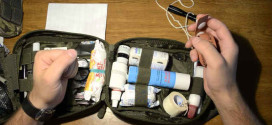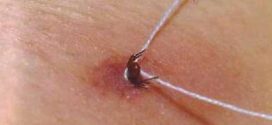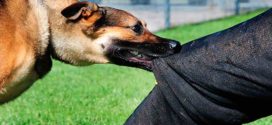Neighborhood with most insects (unless, of course, they are in the house) does not cause us much trouble. But their individual representatives in some cases behave quite aggressively. For some, a bee or wasp sting is just a slight discomfort, while for others they are extremely painful, especially if it is not a single contact, but a massive attack of several individuals (swarm, family).
We will figure out what to do in such a situation, what exactly to do with a bee or wasp sting in order to minimize the negative consequences as soon as possible.
It is sometimes difficult for an inexperienced person to distinguish between some completely different insects that have similarities in size and color. And given that their attack often happens suddenly, then there is practically no time to see who exactly bit (it is more correct to say stung) - a bee, wasp, hornet or bumblebee. Moreover, they attack with lightning speed, and a person’s attention automatically switches to the affected area.
What do these insects have in common? They stick a sting into their prey, through which toxins enter the body. In other words, poison. Therefore, the algorithm of actions in the event that a wasp, a bee, or someone else from the listed "winged" has bitten is almost identical. Therefore, the author considers it inappropriate to paint everything point by point in relation to each type of insect. Differences can only be in the details, and they will be discussed.
So the wasp stings
Content
First aid for a bee, wasp or hornet sting
Inspection of the affected area
For example, a bee stings only once, and leaves its "spear" (along with part of the insides) in the wound. A wasp, a hornet, a bumblebee have a reusable sting. So you need to determine whether it is in the wound or not.
So the bee stings
Sting removal
The bee has a number of notches on it, so trying to pull it out by squeezing it with your fingers (nails) is an unpromising business.
What should be done:
- Take any piercing object that is at hand. It can be a pin, needle, nail scissors, tweezers.
- Thoroughly disinfect both the “tool of labor” and the affected area of the skin. For this, any alcohol-containing liquid is suitable, but only used for cosmetic purposes (cologne, perfume), or drinks (but not a home-made surrogate). Good antiseptics are also iodine, hydrogen peroxide, ammonia solution. There will definitely be something in the refrigerator (bar) or home (car) first aid kit.
Wound disinfection
It is best to treat with a concentrated manganese solution. In the absence of such, warm water, of course, clean, is also suitable. After that, it is desirable to cover the affected area of the skin. Cotton swab (table napkin or something similar), but always dipped in salted water. But this is only the necessary minimum.
If there is aspirin in the house (at the dacha, in the car first aid kit), it must be carefully crushed (1 tablet) and, based on the resulting powder, prepare a “slurry” by adding a couple of drops of warm water. It is heated, since solid fractions dissolve poorly in a cold liquid. It remains only to apply the mixture to the affected area and cover with a napkin.
Elimination of toxins
Each of us has its own characteristics. It is a mistake to believe that the measures taken are enough and now everything will be fine. Of course, you can test yourself or someone else for endurance, “strength”, but it’s better not to risk it, especially if a child is stung. Intoxication is a tricky thing.
It is necessary, if not to completely remove the poison from the body, then at least to neutralize its effect. With multiple bites - a must. To do this, drink more liquid over the next 3 hours . It contributes to the intensive removal of toxins, and with them, toxic substances. The best is hot tea. Sweetened water also works well.
As a rule, these measures with a one-time sting of a bee or wasp are quite enough so that the inflammatory process does not develop.
Additional measures
If several insects have bitten at once, or the edema gradually spreads, increases in size, a number of more measures should be taken:
- Put something cold on the affected area (a towel soaked in water, ice from the freezer, a heating pad). This will prevent the body from absorbing toxins.
- Make a compress. A solution in which a soft tissue (bandage, clean handkerchief, napkin) is wetted is prepared as follows - a teaspoon of baking soda in a glass of warm water.
- If there is lump sugar in the house, then it is slightly wetted and applied to the bite site. Well draws poison from the wound, which is required in this case.
- Those who have an allergic reaction to a bee or wasp sting should take one of the antihistamines. Their list is quite large, but if there is such a person in the house, it is necessary to have a certain supply of drugs from this group and complete the first-aid kit in the car and in the country. The most famous in everyday life are Suprastin, Claritin, Cestine, Tavegil. In principle, it is easy to navigate - the choice is large.
What to do if a wasp, a bee stings a child?
Everything is the same, but there are several nuances that are related to the fact that the child's body is not yet sufficiently prepared for extreme situations.
First , the baby should be calmed immediately. Then - lay on something soft (if there is no bed nearby).
Secondly , be sure to force one of these drugs to drink. The nuance is that if the child had previously had an allergic reaction (regardless of the reason that caused it), then an antihistamine is first given, and only then can one proceed to remove the sting.
Third , watch him closely. At the first signs of difficulty breathing, itching, rash, swelling, fever, immediately take him to the nearest medical facility or call an ambulance. Before her arrival, the baby should be given water as often as possible, and after 35-40 minutes, give the anti-allergic drug again.
Do I need to contact a honey/institution after a wasp or bee sting?
In some cases, this is simply necessary.
Firstly , if the insect stung in the face (lip, tongue), in the neck area. This is exactly what often happens, since it is they who are not protected by clothing. Negative consequences - swelling of the mucosa, the worst option - suffocation. This is due to the proximity of the wound from the respiratory tract.
Secondly , with a massive attack of bees or wasps. A few bites can cause intoxication that the body cannot cope with, and a home first aid kit will not help here. Yes, and a non-professional is unlikely to adequately assess the situation and the degree of damage, so it's better not to risk it.
What to do if the tumor grows?
Apply a tourniquet (to localize toxins and prevent their spread throughout the body) and immediately - to the medical facility. How to properly drag limbs, you can read here .
What to do with a bite if the house (dacha) does not have the necessary drugs?
There are many folk methods that are implemented using improvised means:
- Freshly squeezed parsley juice or a soap solution is well suited for treating the affected area.
- Old people advise using your own urine as an antiseptic. Quite an effective tool, and if there is nothing else, then you don’t have to choose.
- You can relieve pain with a well-mashed sorrel leaf, juice of an acidic berry (for example, cranberry), dogwood, lemon, dandelion. Make a compress from the Golden Mustache tincture. Attach a piece of garlic (chopped), tomato. Validol tablet, balms, gels are also mentioned, but they do not apply to folk remedies. If there is, you can use them - "Fenistil", for example.
- Immediately carefully rub the affected area with an onion cut in half.
- Plantain relieves swelling quite quickly. If a wasp or bee stung away from home is one of the best options, as this plant is quite common and easy to find.
Can I take alcohol for pain relief?
Absolutely not. It in itself is a poison for the body, and will only aggravate the situation. Yes, and its effect is only short-term, but in fact, just an imitation of a medicine.
Any bite can have consequences. Therefore, the general advice is to carefully monitor the affected area for at least the next 2-3 hours. And only if there are no signs of swelling, redness, rash and pain, we can assume that everything ended well. And special attention to children!
Hello, I am Alexander, the mastermind behind the blog.
In terms of career and free time, I connected my life with the forest. How else, when you live in Karelia! In this blog, I am responsible for the hunting, hiking and equipment sections. Welcome to my world!
 Survival Lessons Tips for the survivalist, fisherman and hunter
Survival Lessons Tips for the survivalist, fisherman and hunter



